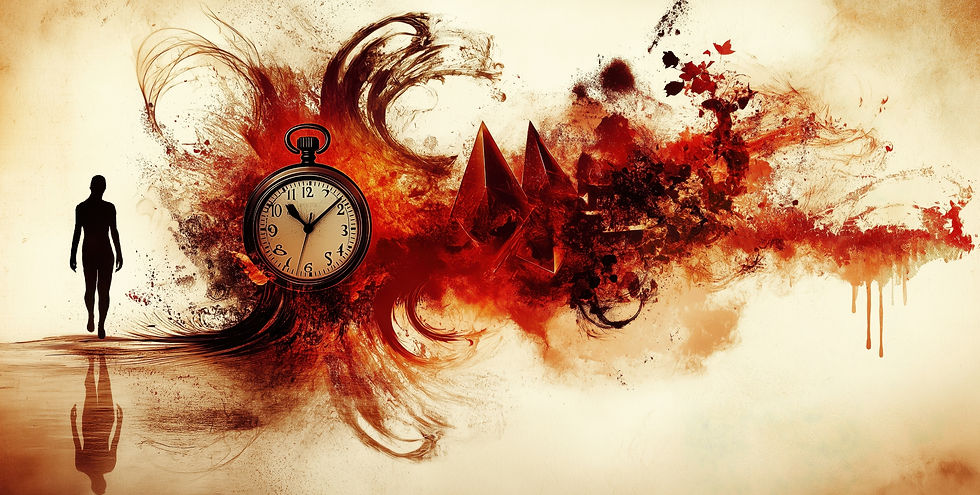Schrödinger's Cat: A Paradox for Understanding Quantum Mechanics
- Cristiano França Ferreira
- Jun 28
- 3 min read

Schrödinger's Cat: A Paradox for Understanding Quantum Mechanics
If you've ever heard of a cat that's both alive and dead at the same time , you've probably had two feelings: confusion and curiosity. This is perfectly natural, after all, we're looking at one of the most provocative thought experiments in the history of science: Schrödinger's Cat .
Proposed in 1935 by the Austrian physicist Erwin Schrödinger , this paradox not only shocked the academic world, but also opened the door to a profound debate about what it means to “exist” and “observe”.
Context: The Battle of Ideas in Quantum Physics
In the 1930s, quantum mechanics was becoming established as the new foundation of modern physics. However, its interpretations still divided the greatest geniuses of the time. On one side, Niels Bohr and the Copenhagen school; on the other, Albert Einstein , skeptical about the probabilistic and “indefinite” nature of quantum reality.
It was in this environment of intense debate that Schrödinger proposed his famous paradox, not as an explanation, but as a criticism of the prevailing interpretation of quantum mechanics, which suggested that a particle could be in several states simultaneously until it was observed.
The Paradox: The Cat and the Box

Let's do the thought experiment:
Place a live cat inside a closed box.
Inside the box, there is a mechanism with:
A bottle of poison,
A radiation detector,
A radioactive atom that may or may not decay.
If the atom disintegrates, the detector triggers the mechanism that releases the poison, killing the cat.
If the atom does not disintegrate, the cat remains alive.
Since the atom is in a state of superposition (disintegrated and not disintegrated at the same time), the cat would also theoretically be both alive and dead until someone opens the box .
Quantum Superposition Taken to the Extreme
Schrödinger's provocation was clear: if quantum laws apply to atoms and particles, why not to macroscopic objects, such as a cat? He used this surreal image precisely to show the limits of the Copenhagen interpretation .
According to quantum mechanics, the system only “collapses” into a single state at the moment of measurement. Before that, all states coexist.
This paradox is not meant to be taken literally. Instead, it is a way of questioning the transition between the quantum and classical worlds .
Observation Effects: Does Reality Only Exist When We Observe?
The cat experiment is a philosophical extension of what was already revealed in the double-slit experiment : observation changes the system .
But what does “observe” mean? Is a conscious observer necessary? Or is interaction with the environment enough?
The Copenhagen interpretation suggests that any measurement - even one made by an instrument - is sufficient to define a state. However, alternative interpretations have emerged over time:
Multiple Worlds (Everett, 1957): the cat is alive and dead, but in different universes.
Objective Collapse : Collapse is a real and spontaneous physical phenomenon, without the need for observation.
An Everyday Curiosity: Why did "Schrödinger's cat" become a meme?
Despite being a technical and abstract concept, the paradox has gained popularity in pop culture - from series like The Big Bang Theory to cartoons and T-shirts. And this is no coincidence.
The logical absurdity of a cat being alive and dead at the same time is a perfect example of real-life metaphors: uncertain decisions, undefined situations, the famous “it depends”.
It is common to hear phrases like:
“Our relationship is a bit like Schrödinger's cat… neither alive nor dead.”
Science, in this case, lends its explanatory power to represent the drama of existence in everyday situations.
Real Applications: Does This Affect My Life?
Yes, in an indirect way. While there are no actual cats in superposition, the idea behind the experiment underpins emerging quantum technologies .
Quantum computing relies on qubits , which operate in superposition states.
Quantum cryptography is based on the impossibility of observing a quantum system without altering it.
These technologies are already in development by companies such as IBM , Google and D-Wave , and have the potential to revolutionize areas such as medicine , finance and digital security .
Final Thoughts: Is the Cat Still in the Box?

Schrödinger's Cat is more than a scientific curiosity. It forces us to think about:
Where is the boundary between reality and possibility?
How far does the role of the observer go?
What, in fact, is “real” before it is observed?
Schrödinger himself said that he considered the paradox an example of absurdity —and that was precisely the point. Quantum physics not only requires new calculations, but a redefinition of the logic with which we interpret the world .
As Stephen Hawking once said:
“Quantum mechanics works perfectly. The problem is that no one understands it completely.”



Comments